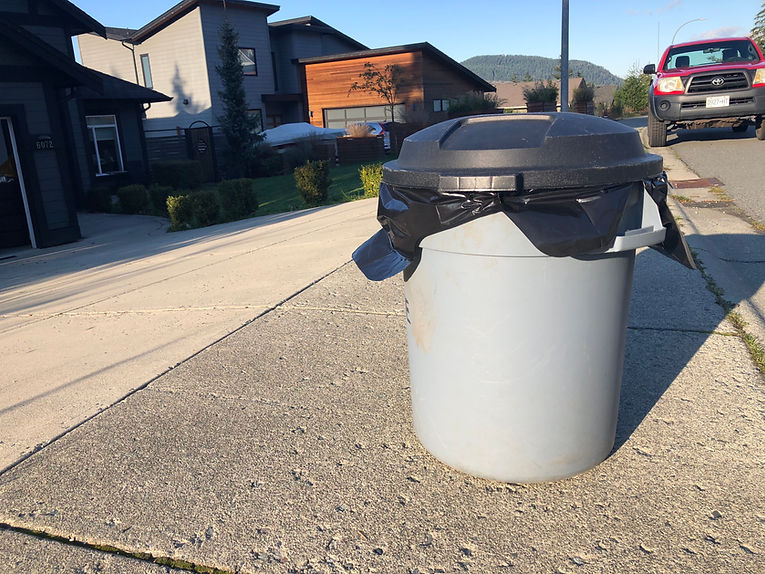
The unlikely international journey of North Cowichan’s garbage
Cost and environmental factors cited
Latest in an occasional series on the Six Mountains
The Six Mountains are a sweet-smelling place: warm sunshine filtering through a Douglas-fir forest; the salty breeze off Sansum Narrows; the earthy embrace of decomposing autumn leaves.
But there is one smell you won’t encounter here — the stench of garbage.
Ever wonder why that is?
I’d be very surprised if you said: ‘Because our garbage goes to the Columbia River area of southern Washington state.’ But you’d be right.
More than 1,500 tonnes annually of North Cowichan garbage — not to be confused with compost or recyclables — are trucked more than 600 kilometres south to a private landfill at Roosevelt, Wash., near the Columbia River.
The garbage first goes to Bings Creek Solid Waste Management on Drinkwater Road where it joins garbage from the Cowichan Valley Regional District.
“They take over from that point,” says David Conway, director of engineering for North Cowichan. “We haven’t operated a garbage dump for decades.”
All in, it costs the municipality about $1 million per year to dispose of our garbage.
Powell River, Whistler, some First Nations in the Fraser Valley and Metro Vancouver also use private landfills on the Washington and Oregon sides of the Columbia River.
Let’s face it, no one in North Cowichan wants a landfill in their backyard. But does shipping our garbage south amount to “out of sight, out of mind?” Should we handle our own garbage and lower our carbon footprint associated with transportation?
“It would be quite expensive for North Cowichan to go it alone,” Conway responds.
He notes that the private facility in southern Washington is located in a semi-arid landscape, much like Cache Creek in the Interior. A landfill in North Cowichan with higher rainfall would have more issues with leachate and contamination of water resources.
The Seattle Times has called the Roosevelt landfill “one of the largest and most high-tech solid-waste facilities in North America.” It also produces enough electricity to power thousands of homes. https://www.republicservices.com/roosevelt-landfill
“Our area would be one of the worst areas for a landfill,” Conway continues.
It is cringeworthy to think that the City of Vancouver landfill is located at Burns Bog in Delta, beside a 2,042-hectare ecological conservation area.
“If we have to generate garbage, it seems that the most appropriate place would be somewhere that has better climatic conditions and ground conditions for that,” Conway said. “I suggest that what we’re doing currently is a practical solution and not merely based on economics.”
There’s always the option of North Cowichan building an incinerator, but our valley already has its fair share of air-quality issues, he points out. “Do we really want to put whatever comes out of a smoke stack…into our air?”
A 1971 story published in the Victoria Daily Times referenced the closure of dumps at Chemainus, Crofton, Maple Bay and Herd Road with completion of an incinerator at Herd Road (near Richards Creek.)
The incinerator, which closed long ago, received wide attention in 1978 when police burned more than 12 tonnes of marijuana seized from two vessels, a haul valued at $5 million to $20 million.
“The sweet, musty smell of the marijuana mingled with the more natural and less pleasant smells of garbage….” The Ladysmith-Chemainus Chronicle reported.
The headline: “Cowichan goes to pot.”
— Larry Pynn, Nov. 1, 2020